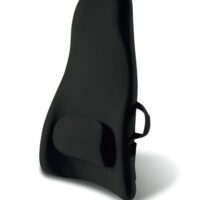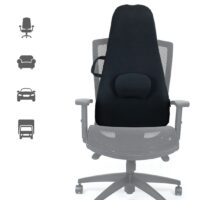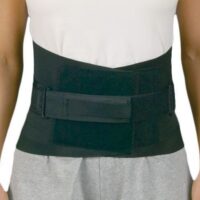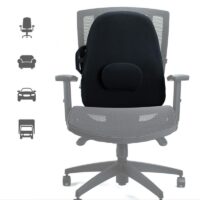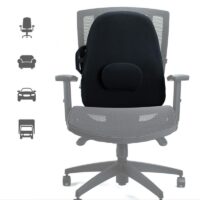Core Exercises
Article by John Miller


Core Exercises
How Strong is Your Core?
The Importance of Core Exercise for Spinal Health and Injury Prevention
Have you ever wondered why having a strong core is essential for your overall health? Core strength, also known as stabilisation, plays a crucial role in dynamically controlling and supporting your spine through deep and specific muscles.
The spinal area is inherently unstable, and the five vertebrae in your lower back that rest on the sacrum – a triangular bone that wedges into the pelvis – allow for twisting, bending, and arching. However, without constant muscular support from your core stabilisers, your spine would be prone to collapsing.
Your deep core muscles are responsible for supporting, controlling, and moving your lower spine and pelvis. They are the most energy-efficient and ideally located muscles to do their job 24/7.
When you experience back pain, your deep core stability muscles automatically switch off, leaving your spine vulnerable to further injuries and persistent chronic pain. However, specific retraining can help reactivate these muscles and restore their function.
An experienced physiotherapist who has undergone core stability retraining can test your core strength. Alternatively, real-time ultrasound physiotherapy can be an even more effective technique for testing your core stability muscles. With a strong core, you can maintain a healthy spine, prevent injuries, and improve your overall physical performance.

Core Exercises FAQs
- Which are the Deep Core Stability Muscles?
- What are the Indicators of Inadequate Core Stability?
- What is Your Core Stability Score?
- What are the Best Core Stability Exercises?
- What’s the Link Between Pilates and Core Stability?
- How Does Real Time Ultrasound Retraining Help Your Core Stability?
More info:
Rochedale - Call 38410277
Book Online: RochedaleSalisbury - Call 32751044
Book Online: SalisburySandgate - Call 32691122
Book Online: SandgateArticle by John Miller
Do Core Exercises Alleviate Lower Back Pain?
Lower back pain affects millions worldwide, and recent research highlights the significance of core exercises in managing this common ailment. Let's explore how core stability training can be a game changer.


What's Your Core Stability?
Your lower back, a region prone to instability, comprises five vertebrae with remarkable flexibility but limited bone support. The deep core muscles are pivotal in supporting and manoeuvring your lower back and pelvis. They're designed for round-the-clock operation, ensuring spinal stability.
The Link Between Core Muscles and Back Pain
Research reveals a direct link between back pain and impaired core muscle functionality. The Transversus Abdominis (TA), a key muscle, often shuts down with lower back pain. This shutdown is universal among sufferers. Alarmingly, the TA doesn't automatically reactivate post-recovery, increasing vulnerability to further injuries.
Read more: Deep Core Stability Muscles
Why Core Stability Matters
Activating and strengthening your core muscles offers more than just back support. It enhances overall athletic performance, including speed, agility, and strength. Core stability exercises are pivotal in not only preventing but also diminishing existing back pain.
Seeking Professional Advice
If you're experiencing lower back pain, consulting a physiotherapist is crucial. They can guide you through tailored exercises, ensuring you engage the right muscles effectively. Visit PhysioWorks for more information and resources.
Conclusion
Incorporating core stability exercises into your routine can significantly impact your lower back health. Remember, prevention is better than cure, and your physiotherapist can guide you on this journey.
What to Do?
Contact your local PhysioWorks physiotherapist for a personalised core stability programme. They can offer professional advice and support tailored to your needs.
Related Articles
Rochedale - Call 38410277
Book Online: RochedaleSalisbury - Call 32751044
Book Online: SalisburySandgate - Call 32691122
Book Online: SandgateWhat Causes Lower Back Pain?
Introduction
Lower back pain is a widespread issue in Australia, stemming from diverse conditions. As physiotherapists, we often encounter various causes of this pain. This guide aims to shed light on these causes and provide valuable insights for effective management.
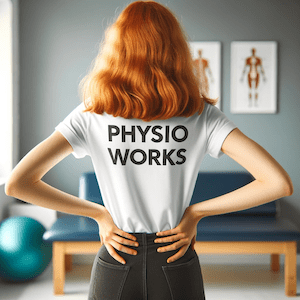

Muscle-Related Injuries
Muscle injuries are a predominant cause of lower back pain, including:
- Back Cramps and Muscle Pain: Typically resulting from overuse or strain.
- Core Stability Deficiency: Weak core muscles can lead to increased back strain.
- DOMS (Delayed Onset Muscle Soreness): Soreness affecting back muscles post-exercise.
Recent research underscores the importance of regular exercise and core strengthening in preventing these injuries.
Bone-Related Injuries
Bone health is crucial in lower back pain, encompassing conditions like:
- Spondylosis: Degenerative spine conditions.
- Spondylolysis or Stress Fracture: Common in athletes, such as cricket bowlers.
- Spondylolisthesis: Occurs when a vertebra slips over another.
- Osteoporosis: Causes bones to weaken, increasing fracture risk. Advancements in bone density scanning have improved early detection and management.
- Scheuermann’s Disease: Affects spinal bone growth in teenagers.
- Scoliosis: An abnormal curvature of the spine causing pain.
- Spinal Stenosis: A narrowing of the spinal canal leading to nerve compression.
Disc-Related Injuries
Spinal discs are vital for spinal health:
- Bulging and Disc Protrusions: These discs protrude or "slip" and can press on nerves.
- Herniated Disc: A more severe form of disc protrusion.
- Degenerative Disc Disease: Age-related disc wear and tear.
Minimally invasive surgical techniques have transformed the treatment of severe disc-related injuries where physiotherapy and other non-operative options fail to improve.
Back Joint Injuries
- Facet Joint Pain: Arises from arthritis or stress on these spinal joints.
Nerve-Related Injuries
Nerve issues can lead to:
- Nerve Pain and Pinched Nerves: Caused by spinal nerve compression from disc bulging or arthritic changes.
- Sciatica: Irritation of the sciatic nerve.
Physiotherapy and newer medications have been effective in managing these conditions. Some will require injection therapies or surgery.
Pelvis-Related Injuries
Pelvic issues also contribute to lower back pain:
- Sacroiliac Joint Pain: Involving joints connecting the spine to the pelvis.
- Piriformis Syndrome: Where the piriformis muscle irritates the sciatic nerve.
Pregnancy-Related Pain
- Pregnancy Back Pain: Often due to increased back strain during pregnancy. Prenatal physiotherapy programs are beneficial.
Systemic Diseases
Systemic diseases like Ankylosing Spondylitis, Fibromyalgia and Rheumatoid Arthritis can cause back pain.
Recent Research and Advancements
Current research emphasises a holistic approach to treating lower back pain. Techniques like yoga and Pilates, alongside traditional physiotherapy, and conservatively progressed gym programs show significant relief. The role of diet in managing weight and inflammation is increasingly recognised.
Best Treatments for Lower Back Pain
Treatment varies but often includes:
- Physiotherapy
- Pain management
- Strength and flexibility exercise programs
- Ergonomic adjustments
- Surgical interventions for severe cases
Conclusion
Lower back pain is a significant health concern in Australia. Understanding its causes and seeking professional physiotherapy advice can greatly improve life quality. Remember, early intervention is key for an effective recovery.
What to Do?
If you're experiencing lower back pain, it's vital to consult a physiotherapist or doctor. They can provide an assessment and customised treatment plan based on your specific condition.

















